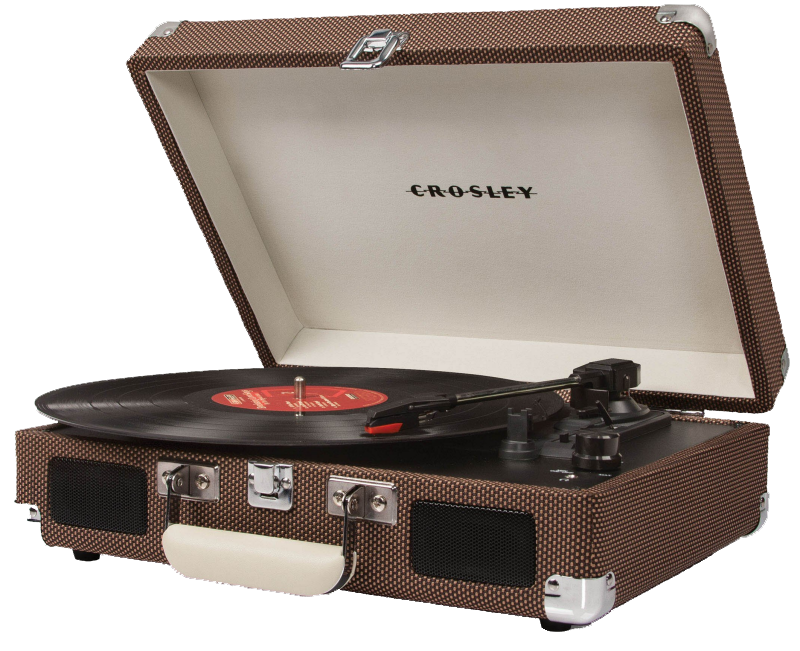
This image has format transparent PNG with resolution 800x651.
You can download this image in best resolution from this page and use it for design and web design.
Record player PNG with transparent background you can download for free, just click on download button.
A phonograph, later called a gramophone (as a trademark since 1887, as a generic name in the UK since 1910), and since the 1940s a record player, or more recently a turntable, is a device for the mechanical and analogue reproduction of recorded sound. The sound vibration waveforms are recorded as corresponding physical deviations of a spiral groove engraved, etched, incised, or impressed into the surface of a rotating cylinder or disc, called a "record". To recreate the sound, the surface is similarly rotated while a playback stylus traces the groove and is therefore vibrated by it, very faintly reproducing the recorded sound. In early acoustic phonographs, the stylus vibrated a diaphragm which produced sound waves which were coupled to the open air through a flaring horn, or directly to the listener's ears through stethoscope-type earphones.
The phonograph was invented in 1877 by Thomas Edison. Phonograph use would grow the following year. Alexander Graham Bell's Volta Laboratory made several improvements in the 1880s and introduced the graphophone, including the use of wax-coated cardboard cylinders and a cutting stylus that moved from side to side in a zigzag groove around the record. In the 1890s, Emile Berliner initiated the transition from phonograph cylinders to flat discs with a spiral groove running from the periphery to near the center, coining the term gramophone for disc record players, which is predominantly used in many languages. Later improvements through the years included modifications to the turntable and its drive system, the stylus or needle, pickup system, and the sound and equalization systems.
The disc phonograph record was the dominant commercial audio distribution format throughout most of the 20th century. In the 1960s, the use of 8-track cartridges and cassette tapes were introduced as alternatives. By 1987, phonograph use had declined sharply due to the popularity of cassettes and the rise of the compact disc. However, records have undergone a revival since the late 2000s. This resurgence has much to do with vinyl records' sparing use of audio processing, resulting in a more natural sound on high-quality replay equipment, compared to many digital releases that are highly processed for portable players in high-noise environmental conditions. However, unlike "plug-and-play" digital audio, vinyl record players have user-serviceable parts, which require attention to tonearm alignment and the wear and choice of stylus, the most critical component affecting turntable sound.
In this page you can download free PNG images: Record player PNG images free download